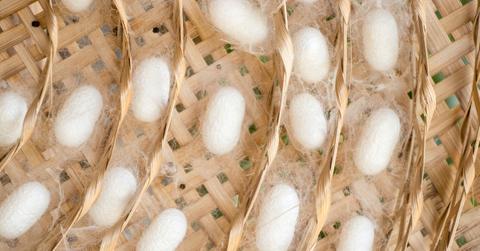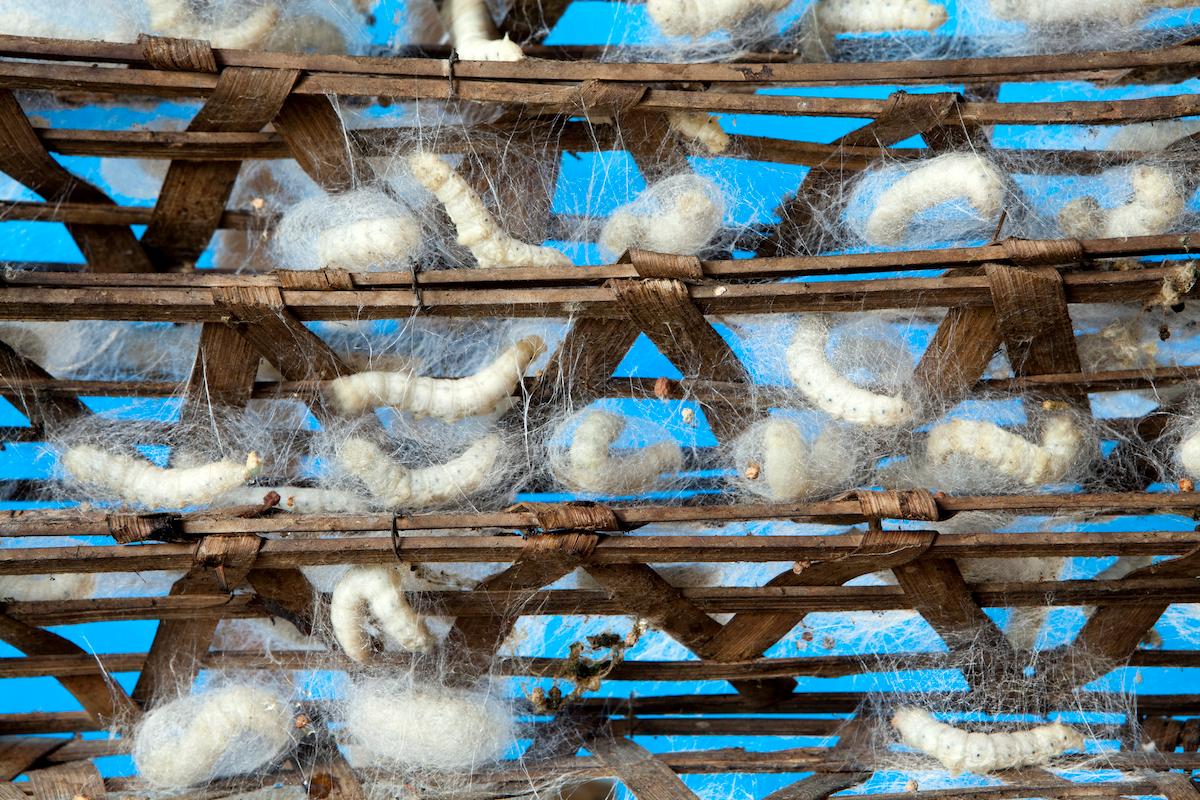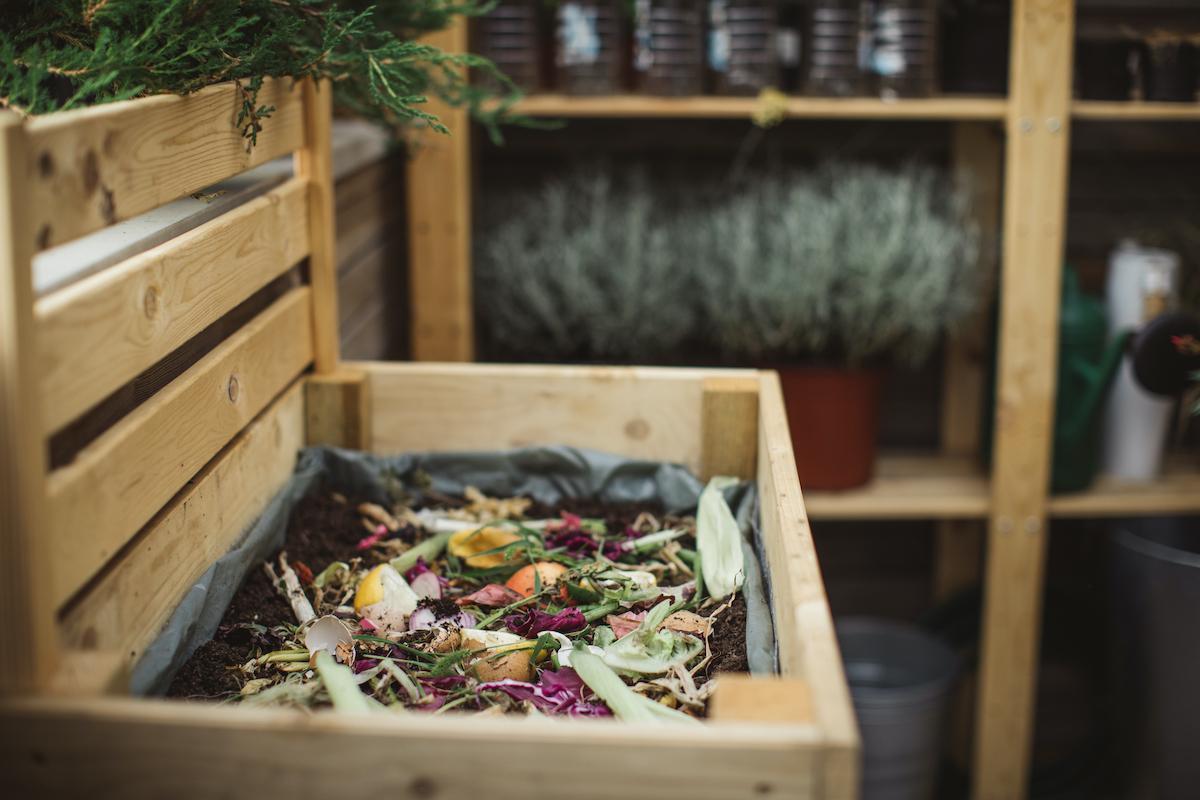Why Don’t Vegans Wear Silk? Is Silk Sustainable?
Vegans do not purchase silk — but why? And is the fabric sustainable?
Updated Sept. 1 2020, 3:35 p.m. ET

Silk is often touted as an eco-friendly, natural, material — but with so many fabrics out there, it can be hard to determine what is really sustainable, and what simply has gotten a sustainable reputation. Questions about the sustainability of silk may have you wondering why silk is not considered a vegan fabric — because if going vegan is one of the most impactful lifestyle changes we can make for the planet, why don’t vegans wear silk?
Read on to learn more about why vegans do not purchase silk, how silk is made, and whether or not silk is as eco-friendly as it may seem.
Why don’t vegans wear silk?

Vegans don’t eat, wear, or use products made from or by animals, instead opting for animal-free and cruelty-free food, clothing, and products. Silk is made from fibers spun by worms, who are animals, in a process that’s surprisingly cruel and typically ends with the worms being killed. For those reasons, vegans typically do not wear or use silk.
What is silk, and how is silk made?
Silk is a fabric made from the fibers that silkworms spin when they are building their cocoons.
Most silk is made from domesticated silkworms that are raised on farms, just like how meat and dairy come from animals bred and raised on farms.
There are a few different processes when it comes to taking silk from worms, but here’s one of the most common processes for how worms commercially make silk, as explained by ThoughtCo. After being bred, the silkworms are fed mulberry leaves (hence the name “mulberry” silk). Once they are ready to spin their cocoons, they enter the pupal stage. At that point, they secrete a liquid version of silk from two glands in their heads, and form their cocoons.
In nature, the worms would eventually chew through their cocoon, emerge as a moth, and fly away. However, in the silk industry, this is the point where farmers drop the cocoons, which contain the live silkworms, in boiling water. This not only kills the worms, but also unravels the cocoons, resulting in the formation of long silk threads.
Unfortunately, this process has a very low fabric yield. According to PETA, around 3,000 silkworms are killed to make just one pound of silk. Or, as ThoughtCo puts it, for just one gram of silk thread, 15 silkworms are killed; and for one silk sari, 10,000 are killed.
What is Peace Silk, or Ahimsa Silk?
Peace Silk, also known as Ahimsa Silk (ahimsa is Sanskrit for non-violence), is a process of harvesting silk from worms without killing them, according to Treehugger.
Stella McCartney is famously a vegetarian fashion house, eschewing animal-based leather and fur, but she does use silk — primarily, commercial silk, but occasionally, Peace Silk. As explained on the luxury designer’s website, Peace Silk is made the same way as commercial silk; the key difference is that the farmers allow the silkworms to naturally emerge from their cocoons as moths, and then fly away. At that point, the farmers gather the silk from the abandoned cocoons.
However, revamping the silk industry is not as simple as everyone switching to Peace Silk. For one thing, this method produces broken silk thread, as opposed to the long silk threads that are created by the worms in the commercial silk industry. The threads then need to be woven together, Stella McCartney explains. Because of that, Peace Silk is more expensive than commercial silk. Not only that, but the process is still not one most vegans would condone, as it still involves the breeding and use of silkworms.
Additionally, the worms used in the silk industry have been bred over centuries to be optimal for producing silk (much like chickens, cows, pigs, and other animals in the factory farming system), so even though they are “set free” once they become moths, they can only survive for five to 10 days after leaving their cocoons, according to mueZart.
What are vegan alternatives to silk?

Some vegans are comfortable purchasing and wearing clothing made from secondhand silk, as doing so takes the item out of the waste stream, and does not contribute to the demand for more silk.
But fortunately, if you do not want to wear silk, there are many alternatives.
Silky fabric alternatives are often made from semi-natural, semi-synthetic fabrics such as viscose, rayon, lyocell (aka TENCEL), and modal. These fabrics are all semi-synthetic cellulosic materials, according to the blog Ecocult, and in many cases, are biodegradable, and sometimes even compostable.
Other silk fabric alternatives can be made with synthetic fibers, most commonly polyester. Of course, polyester is generally not seen as eco-friendly, as it is made from petroleum. But because synthetic fabrics do not involve any animal exploitation, vegans are likely to choose polyester over silk — but a great middle ground choice is a garment made from viscose, rayon, lyocell, or modal.
Silk is most commonly used to make clothing including neckties, blouses, wedding dresses and evening gowns, and lingerie; it’s also sometimes used to make household items like silk pillowcases and dental floss. Fortunately, there are vegan versions of all these items — and not only will they be free of animal cruelty, but synthetic and semi-synthetic fabrics are typically cheaper than natural silk. Click here for a list of brands using vegan silk.
Is silk a sustainable fabric?

According to the Sustainable Apparel Coalition’s Higg Index, and as reported by Ecocult, “silk has by far the worst impact on the environment of any textile, including polyester, viscose/rayon, and lyocell. It’s worse than the much-demonized cotton, using more fresh water, causing more water pollution, and emitting more greenhouse gases.”
Even though silk is biodegradable, the process of harvesting silk has a very high environmental impact — mostly in terms of energy use, but also in terms of chemical use (some silk farms use formaldehyde, chlorine, and other toxic chemicals), fresh water use, water pollution, and greenhouse gas emissions. In fact, silk contributes to those latter three factors even more than cotton does.
Surprisingly, the Higg Index found polyester to be the lowest-impact alternative to silk — even lower impact than the semi-natural fabrics listed above.
Is silk compostable?

100 percent silk fabric will break down in your compost pile — but it will take longer than the average banana peel to break down. According to various sources, it could take up to a year to completely return to the earth.
That said, before chucking an old silk blouse in the compost bin, investigate the material of your silk garment’s surrounding fabric, as it could be layered with a synthetic lining, or sewn together with synthetic thread. According to the blog Can I Compost This?, makers of garments with natural fibers sometimes get away with using polyester-based thread, which will not break down in the compost. So if you don’t mind plucking the thread out of your compost heap after the garment has disappeared, go for it. Just don’t put it in a compost bin that you do not monitor (such as your municipality’s curbside compost service), since the thread could contaminate the batch.
Additionally, silk dental floss is compostable, and it generally breaks down in backyard compost bins in 6 to 10 months, according to the brand Dental Lace. And good news for those who avoid the use of silk — the brand also makes a plant-based floss that is compostable.